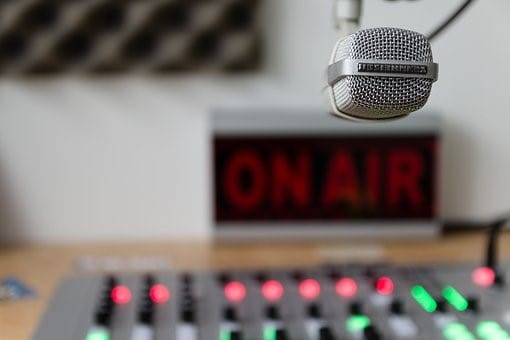Affordable music recording and mixing equipment are more accessible today than ever before, and home studios are becoming almost commonplace. But it takes more than just a love for music and a few hundred dollars to set up a full-fledged, quality-producing studio in your home. It also takes an understanding of which equipment is best and why and when to use it.

One of the most critical pieces of home studio equipment that even the barest beginner should invest in, is a top-tier pair or two of studio headphones. If you need help finding the best studio headphones, click on the link for in-depth analyses of the top brands and styles.
Continue reading below to learn the difference between studio and “consumer” headphones and the difference between closed-back and open-back studio headphones.
Why Are Studio Headphones Superior to Consumer Headphones?
Most people are used to “ordinary” or “consumer” headphones for listening to music and prefer them to studio headphones for that purpose. That’s because consumer headphones have built-in “sound enhancements” such as boosted bass, extra treble, or other adjustments that consumers tend to like.
But, studio headphones’ great advantage in the recording studio is that they give you “flat audio” that is “unbiased” in any direction. That is, you hear the sound just as it really is without any “improvements” being superimposed. That’s exactly what you need when you are monitoring a recording to ensure top quality.

Also, when you use studio headphones instead of studio monitors during recording or mixing, you don’t disturb the neighbors or others in the house who may already be asleep. That’s a second major reason to use studio headphones.
Third, a good pair of studio headphones will offer effective sound isolation, which makes it easier for you to evaluate the music you’re monitoring despite a noisy studio or noise emanating into your studio from elsewhere.
Fourth, studio headphones are built to be very comfortable to wear, even for many hours in a row. And they are sturdily built and relatively inexpensive, which means you can afford to have multiple pairs and not have to replace any one of them for years to come.
Monitoring During Recording VS Mixing
Both studio monitors (speakers) and headphones are best used during your recording and mixing sessions whenever possible. Here’s why.
If you are making a voice (or even instrumental) recording, the artist you are recording needs to hear the soundtrack that they are following, so they can sing or play in sync with it. But you can’t put the track through the speakers, or it will spill over into the recording and ruin it. A good pair of studio headphones over each artist’s ears is the obvious solution.
And suppose you are recording multiple artists simultaneously. In that case, you do the same thing (use a pair of headphones on each artist), but you also have to use a headphone amplifier to ensure everyone can hear the track adequately.
Now, during mixing, the use of headphones is different. You generally don’t want to use them at all to mix a whole track since the final result will sound significantly different through monitors versus through headphones. But you also want to check the mix with headphones since so many listen to music via headphones anyway these days.
And studio headphones can be used to fine-tune and perfect elements of a mix. It’s a detailing tool, basically, and one that you should include in your overall mixing strategy.
Open Back VS Closed Back Studio Headphones
Once you have decided to invest in studio headphones of one sort or another, the very first decision you’ll have to make is whether to buy open or closed-back headphones.
In reality, you should own both since they each serve specific purposes. But you may want to start off with just one or the other, depending on what you do more of: recording or mixing. Closed-back headphones are mainly for recording tracks, while open-back headphones are best used for mixing.
Open Back Headphones
Open-back studio headphones are fabulous for mixing but not as good for recording. They give you a far more “natural” sound due to their “openness,” but this pro becomes a con during recording because it means sounds from the headphones can “leak out” and then “leak back into” the recording. And spilling over is an even more problematic possibility if you are using a click track.
But the smooth, “real,” open sound of open-back headphones is undoubtedly great to have for a mix. And they can even be good with recordings of loud instruments like guitars or drums, where the sheer volume of the sound would mask a spillage anyway.
Closed Back Headphones
For recording, closed-back studio headphones are often best. They have very intense sound isolation, isolating your ears from all but the sounds of recording that you are monitoring. This obviously makes it easier to focus on what you’re doing and to “nitpick” at the recording until you get it just perfect, even if that means going to “Take 32!”
Also, closed-back headphones tend to give you superior bass reproduction as compared to their open-back equivalents.
Most beginners will want to start out with a pair of closed-back headphones and focus on recording, but that’s just average. You might be different and want to start with open-back or just buy both types of studio headphones right away. It all depends on your needs and preferences.
Some Final Thoughts
There is much more you can learn about the value and use of studio headphones and about the differences between open and closed-back varieties. And, you’ll find that many people have their own rigidly held opinions about which type to use when that differ from the opinions of others no less experienced.
That’s why it’s good to “pick the brain” of multiple “old pros” and take in all the information online and offline before making a final decision and making a purchase.

